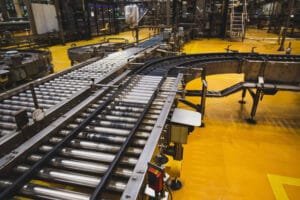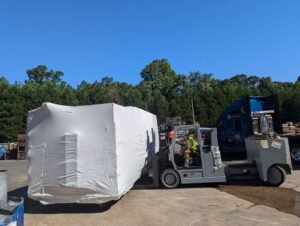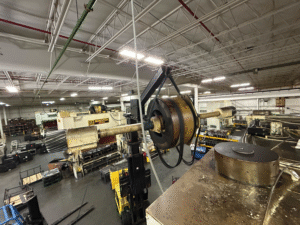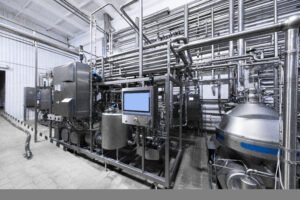Millwright maintenance plays a crucial role in the smooth functioning of industrial machinery. However, many businesses struggle to strike a balance between regular maintenance costs and the benefits it brings. In this comprehensive analysis, we delve deep into the cost-benefit dynamics of regular millwright maintenance, exploring its financial implications, operational advantages, and long-term sustainability.
Understanding Millwright Maintenance
Industrial machinery forms the backbone of numerous operations across diverse sectors. From manufacturing to energy production, these machines facilitate essential processes, making their uninterrupted performance critical. However, ensuring their seamless operation requires more than mere reliance on initial functionality. It demands a strategic approach that acknowledges the inevitability of wear and tear over time. This recognition underscores the significance of millwright maintenance—a comprehensive framework aimed at preserving the efficiency and longevity of industrial equipment.
The Importance of Millwright Maintenance
Effective millwright maintenance is not merely a reactive measure taken in response to malfunctions; rather, it constitutes a proactive strategy essential for sustaining operational continuity. By proactively addressing potential issues, organizations can preempt costly breakdowns and mitigate the associated downtime. This approach not only minimizes disruptions to production schedules but also safeguards against the ripple effects that downtime can have on the entire supply chain and customer satisfaction.
Components of Regular Maintenance
- Inspection: Regular inspections serve as the cornerstone of millwright maintenance, allowing for the early detection of abnormalities or wear in machinery components. Through meticulous examination, maintenance personnel can identify potential issues before they escalate into full-blown problems. This proactive approach empowers organizations to implement timely interventions, thereby averting unplanned downtime and costly repairs.
- Lubrication: Proper lubrication is indispensable for the smooth operation of industrial machinery. By reducing friction between moving parts, lubricants mitigate wear and tear, thus extending the lifespan of critical components. Regular lubrication schedules, tailored to the specific requirements of each machine, ensure optimal performance while minimizing the risk of premature failure due to inadequate lubrication.
- Repair: Prompt repair of damaged or malfunctioning components is a fundamental aspect of millwright maintenance. Whether addressing minor issues or conducting extensive repairs, timely interventions help prevent the deterioration of machinery and associated systems. By promptly rectifying deficiencies, organizations can maintain operational efficiency and forestall the escalation of problems that could lead to costly downtime.
- Replacement: Scheduled replacement of worn-out parts is essential for sustaining the performance and reliability of industrial equipment. Through proactive monitoring and predictive analytics, maintenance teams can identify components nearing the end of their operational lifespan. By strategically planning replacements, organizations can prevent unexpected failures and optimize the overall cost-efficiency of maintenance operations.

The Cost of Regular Millwright Maintenance
Regular maintenance performed by millwrights is essential for sustaining optimal functionality and longevity of industrial machinery. While it incurs expenses, the long-term benefits outweigh the initial costs. Let’s delve deeper into the cost-benefit analysis of regular millwright maintenance.
Direct Costs
Direct costs associated with regular millwright maintenance primarily include labor expenses, replacement parts, and consumables. These expenditures are influenced by several factors, including the type and complexity of machinery, the frequency of maintenance, and the skill level of maintenance personnel.
- Labor Costs: Skilled millwrights are essential for conducting thorough inspections, identifying potential issues, and executing necessary repairs. Labor costs can vary based on factors such as hourly wages, experience level, and the duration of maintenance tasks.
- Replacement Parts: Machinery components wear out over time and require replacement to maintain operational efficiency. The cost of replacement parts depends on factors such as the brand, quality, and availability of components specific to each machine.
- Consumables: Lubricants, fluids, filters, and other consumables are necessary for maintaining machinery performance and preventing premature wear. The expenditure on consumables may fluctuate based on usage rates and the type of equipment being serviced.
Indirect Costs
In addition to direct expenses, neglecting regular millwright maintenance can lead to various indirect costs that significantly impact overall operational efficiency and financial stability.
- Downtime: Unplanned downtime resulting from equipment failure can have detrimental effects on production schedules, causing delays, missed deadlines, and revenue loss. Every minute of downtime translates into potential financial losses, making proactive maintenance measures crucial for minimizing disruptions.
- Emergency Repairs: Reactive maintenance, prompted by sudden breakdowns, often entails higher costs compared to proactive maintenance practices. Emergency repairs may involve expedited shipping of replacement parts, overtime pay for maintenance personnel, and expedited service fees from external contractors, further escalating expenses.
- Safety Risks: Neglecting maintenance increases the risk of workplace accidents and injuries, posing significant safety hazards to personnel and potentially leading to legal liabilities and compensation claims. Investing in regular maintenance not only preserves equipment integrity but also ensures a safer work environment for employees.
Cost-Benefit Analysis
While the upfront costs of regular millwright maintenance may seem substantial, conducting a comprehensive cost-benefit analysis reveals the long-term advantages and returns on investment.
- Increased Equipment Lifespan: Proactive maintenance practices, including routine inspections and preventive repairs, extend the lifespan of industrial machinery. By addressing minor issues before they escalate into major problems, organizations can maximize the utility of their assets and delay costly replacements.
- Enhanced Operational Efficiency: Well-maintained equipment operates more efficiently, consuming less energy and resources while delivering optimal performance. Improved efficiency translates into higher productivity, reduced downtime, and lower operating costs over time.
- Risk Mitigation: Regular maintenance minimizes the risk of unexpected breakdowns, production interruptions, and safety incidents, safeguarding against potential financial losses and reputational damage. By identifying and addressing potential hazards proactively, organizations can mitigate risks and ensure business continuity.
Calculating Return on Investment (ROI)
In the realm of industrial operations, calculating Return on Investment (ROI) for regular millwright maintenance is imperative for strategic decision-making. It involves assessing the financial gains derived from investing in proactive maintenance measures against the costs incurred.
Cost-Saving Opportunities
- Reduced Downtime: One of the primary cost-saving benefits of regular millwright maintenance is the mitigation of unplanned downtime. By implementing scheduled maintenance routines, businesses can preemptively address potential issues before they escalate into full-blown equipment failures. This proactive approach ensures optimal uptime, enabling businesses to adhere to production schedules and meet customer demands more effectively. Reduced downtime translates to increased productivity and revenue generation, enhancing the overall profitability of the operation.
- Lower Repair Costs: Proactive maintenance also helps in identifying and addressing minor issues early on, preventing them from snowballing into major breakdowns that necessitate extensive and expensive repairs. By regularly inspecting and servicing machinery, millwrights can detect wear and tear, corrosion, or other signs of degradation, allowing for timely interventions. This not only minimizes repair costs but also extends the lifespan of equipment, maximizing the return on investment.
- Energy Savings: Well-maintained machinery operates more efficiently, consuming less energy and contributing to significant cost savings in terms of utility bills. Regular maintenance ensures that equipment components are functioning optimally, with proper lubrication, alignment, and calibration. As a result, friction and energy losses are reduced, leading to enhanced energy efficiency across the production line. Over time, these energy savings can add up substantially, bolstering the financial benefits of proactive maintenance initiatives.
Long-Term Sustainability
Investing in regular millwright maintenance fosters a culture of sustainability by minimizing resource wastage, promoting equipment longevity, and reducing environmental impact.
- Promoting Equipment Longevity: Investing in regular millwright maintenance fosters a culture of sustainability by extending the operational lifespan of machinery and equipment. By addressing wear and tear promptly and implementing preventive measures, businesses can minimize the need for premature replacements and reduce the associated environmental impact. Prolonging the usability of assets not only conserves resources but also optimizes the return on investment by maximizing the productive lifespan of capital equipment.
- Minimizing Resource Wastage: Regular maintenance practices contribute to the efficient utilization of resources by ensuring that equipment operates at peak performance levels. This minimizes instances of material wastage, rework, and scrap resulting from equipment malfunctions or suboptimal operation. By maintaining tight tolerances, alignment, and functionality, millwrights help businesses optimize resource utilization, reducing both costs and environmental footprint.
- Reducing Environmental Impact: By proactively maintaining equipment, businesses can minimize their environmental footprint by reducing emissions, energy consumption, and waste generation associated with inefficient operation or breakdowns. Sustainable maintenance practices, such as proper lubrication, calibration, and cleaning, not only enhance operational efficiency but also contribute to environmental stewardship. This aligns with corporate sustainability goals and reinforces the organization’s commitment to responsible business practices.
In conclusion, the cost-benefit analysis of regular millwright maintenance reveals a multitude of financial and environmental advantages. By investing in proactive maintenance measures, businesses can realize significant cost savings through reduced downtime, lower repair costs, and energy efficiency gains. Moreover, fostering a culture of sustainability through equipment longevity and resource optimization reinforces the long-term viability of the operation while minimizing its environmental footprint.
Implementing an Effective Maintenance Strategy
Implementing an effective maintenance strategy is essential for maximizing the longevity and efficiency of millwright equipment. By prioritizing regular maintenance, businesses can mitigate the risk of unexpected breakdowns, reduce downtime, and ultimately enhance productivity and profitability. This section will delve into the cost-benefit analysis of developing and executing a comprehensive maintenance plan.
Developing a Maintenance Schedule:
One of the primary steps in establishing an effective maintenance strategy is developing a structured maintenance schedule. The frequency of maintenance tasks should be determined based on various factors, including equipment specifications, operating conditions, and industry best practices. Conducting thorough research and consulting with industry experts can help in determining the optimal frequency for each maintenance task.
Planning:
Once the maintenance frequency is established, it’s crucial to plan maintenance activities strategically. Scheduled maintenance should be performed during planned downtime to minimize disruption to production operations. By aligning maintenance schedules with downtime periods, businesses can avoid costly interruptions to production and ensure that equipment is serviced efficiently without impacting overall productivity.
Documentation:
Accurate and detailed documentation of maintenance activities is vital for tracking performance and identifying trends over time. Keeping comprehensive records, including inspection reports, work orders, and equipment history, allows maintenance teams to monitor the condition of equipment, identify recurring issues, and make informed decisions about future maintenance needs. Additionally, documentation serves as a valuable resource for audits, compliance purposes, and warranty claims.
Training and Skill Development:
Investing in training and skill development programs for maintenance personnel is essential for ensuring that they have the knowledge and expertise to perform tasks effectively and safely. Providing ongoing training opportunities not only enhances the capabilities of maintenance staff but also fosters a culture of continuous improvement within the organization. Training programs should cover a range of topics, including equipment operation, maintenance procedures, safety protocols, and troubleshooting techniques.
Conclusion
Regular millwright maintenance is not just a cost but an investment in the long-term success and sustainability of industrial operations. By carefully analyzing the cost-benefit dynamics and implementing an effective maintenance strategy, businesses can maximize equipment reliability, extend lifespan, and achieve significant cost savings in the long run. Embracing proactive maintenance not only enhances operational efficiency but also contributes to a safer work environment and a more sustainable future.













